8 Impressive DIY Handrails for Stairs You Can Construct Today (With Pictures)
-

- Last updated:
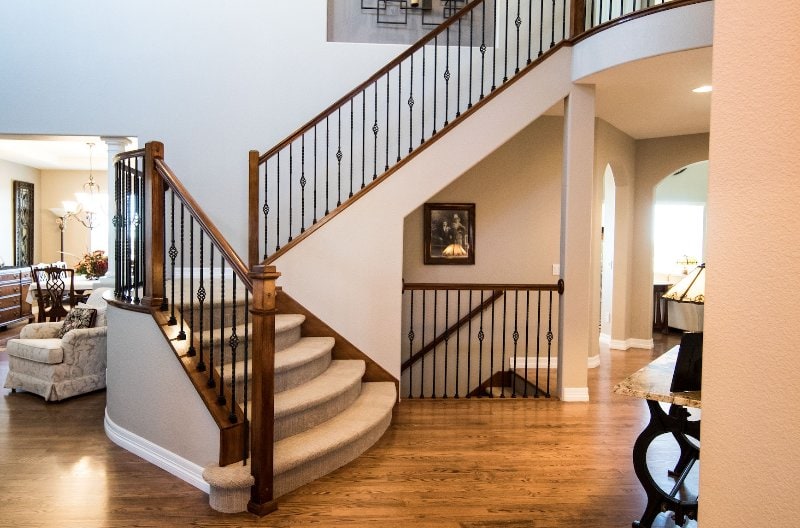
Handrails are an integral part of a staircase for stability and appearance. Choosing the right handrail means finding one that fits in the space and with the décor. Options range from wood to metal and, as long as you have the tools and a little DIY ability, you can make and fit your own handrails. There are even some handrail kits that make the process easier and help ensure that you get everything you need to finish the job.
Read on for DIY handrail guides to inspire you and help finish your staircase in style.
The 8 DIY Handrails for Stairs
1. DIY Stair Cable Railing by Robuilt
| Materials: | Cable Rail Kit |
| Tools: | Drill, Cable Cutters |
| Difficulty: | Easy |
As long as you have a basic rail and posts set up, you can buy cable rail kits that are easy to attach and can be shortened or lengthened to your needs, before tightening the cables to give an industrial look to your railings, and this DIY stair cable railing guide shows you the basic principle of how to apply the cables, as well as a few tips to ensure the best results. As well as being suitable for horizontal railings, the kits can also be used down the stairs in a diagonal orientation.
2. DIY Garage Stairs Railing by Hunter Carlson
| Materials: | Wood Balusters, Wood Handrail |
| Tools: | Miter Saw, Drill, Nailer |
| Difficulty: | Moderate |
If you have garage stairs or a few stairs that lead to the entrance, it is a good idea to have at least one handrail. It makes it easier to climb up and down the stairs and also finishes the design of the stairs so that they look better. This garage stairs railing guide uses premade balusters and a wood handrail and shows you how to attach them securely.
3. DIY Stair Handrail with Industrial Pipes and Wood by Homedit
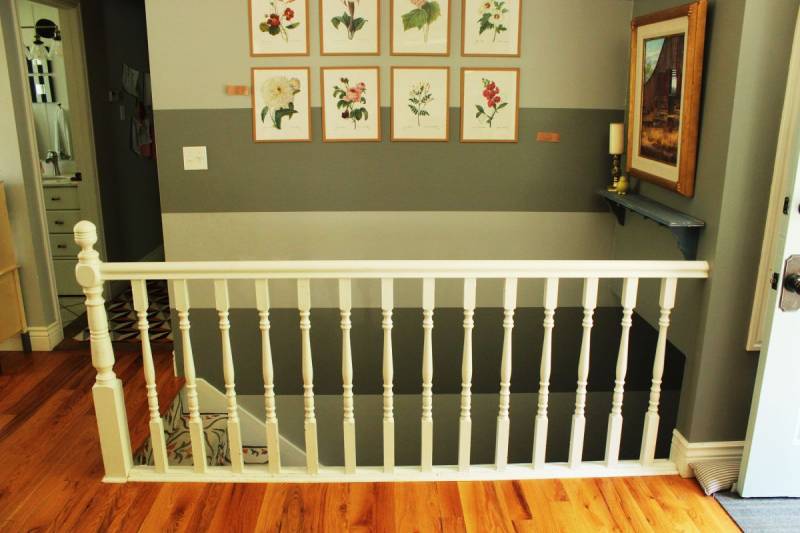
| Materials: | 4×4 Wood, 1×6 wood |
| Tools: | Drill, Miter Saw, Sander, Dremel, Hammer, Screwdriver, Brad Nails, Kreg |
| Difficulty: | Moderate |
Handrails do get a lot of use and even if you don’t hang and swing from them, they can become damaged or start to look tired after a few years. Rather than keep updating existing rails with a fresh coat of paint, you can completely change the look of a landing by replacing a wooden handrail using this DIY stair handrail with industrial pipes and wood guide.
4. DIY Wood Handrail by Ana White
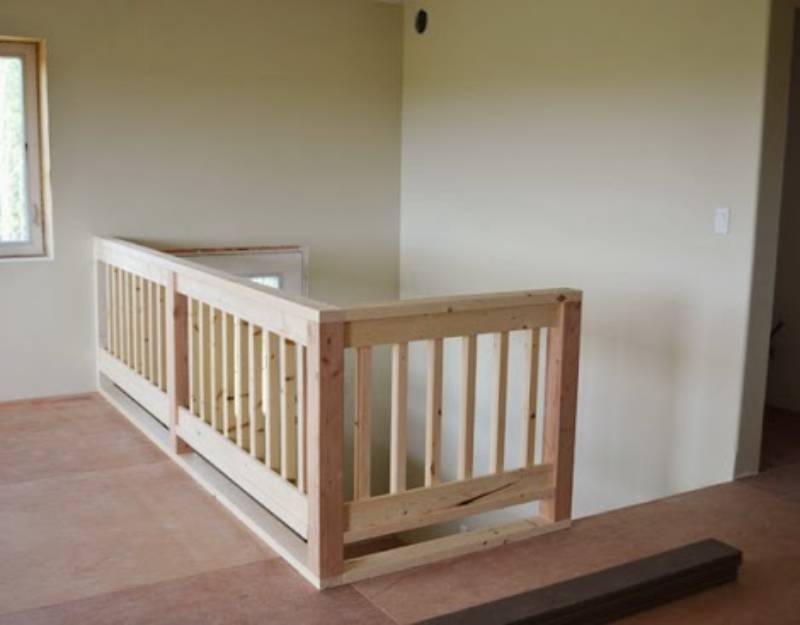
| Materials: | 2×2 Boards, 2×4 Boards, 4×4 Posts |
| Tools: | Saw, Sander, Drill, Screws |
| Difficulty: | Moderate |
This wood handrail is made completely from scratch using a selection of 2×2 and 2×4 boards and then connected to 4×4 posts. You can choose the timber yourself and the wood will need finishing or painting after it has been installed. Ensure your measurements are precise to ensure accurate placement.
5. DIY Stair Handrail Made from Copper Pipe by Semigloss Design
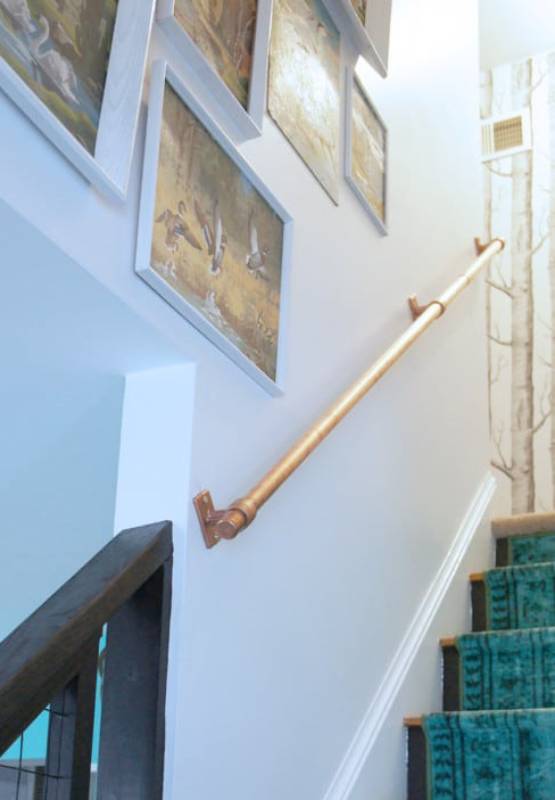
| Materials: | Copper Pipe, Rail Support, Copper Cap, Copper Coupling, Copper Spray Paint |
| Tools: | Drill, Hacksaw, Dremel, Grinding Bit |
| Difficulty: | Moderate |
Copper is an incredible material and copper pipe is surprisingly easy to get hold of. You can buy a new pipe or repurpose an old one if you can find a good supply of decent-quality pipe. While it doesn’t matter if the copper has an aged patina, you do need the pipe to be straight and free from dents and dings. This DIY stair handrail made from copper pipe gives a really modern look, especially thanks to the copper spray paint that is added at the end of the project.
6. DIY Stair Railing by Bigger Than the Three of Us
| Materials: | Wood Handrail, Brass End Caps, Brass Bracket |
| Tools: | Chisel, Drill |
| Difficulty: | Moderate |
Copper and metal handrails can look ultra modern but they can be cold and, unless you get the décor just right, they can look utilitarian and functional. Wood, on the other hand, is natural and has a warm appearance. It can also be made to look traditional or modern, depending on how it is used and what it is used with. Adding brass end caps and hardware, like in this tutorial for a stair railing with wooden handrail and brass end caps, does give a warm, traditional look to any stairs. In the case of the video, it is used to make the basement steps look more appealing.
7. DIY Walnut Rail with Motion Sensor Light by BYOT
| Materials: | Walnut Slab, LED Motion Sensor, Handrail Brackets |
| Tools: | Router, Chop Saw, Sander, Clamps |
| Difficulty: | Moderate |
Walnut is another warm-looking and attractive wood that is great for handrails. This DIY walnut rail with motion sensor light video is also beneficial because it shows you what you can do if the piece of wood you have bought as a handrail isn’t long enough to stretch the entire length of the stairs. And, finally, the rail has LED lights built in that are tripped by a motion sensor so you can enjoy illuminated stairs whenever you go up or down without having to flick a switch.
8. DIY Handrail from Galvanized Pipe by Smiedendipity
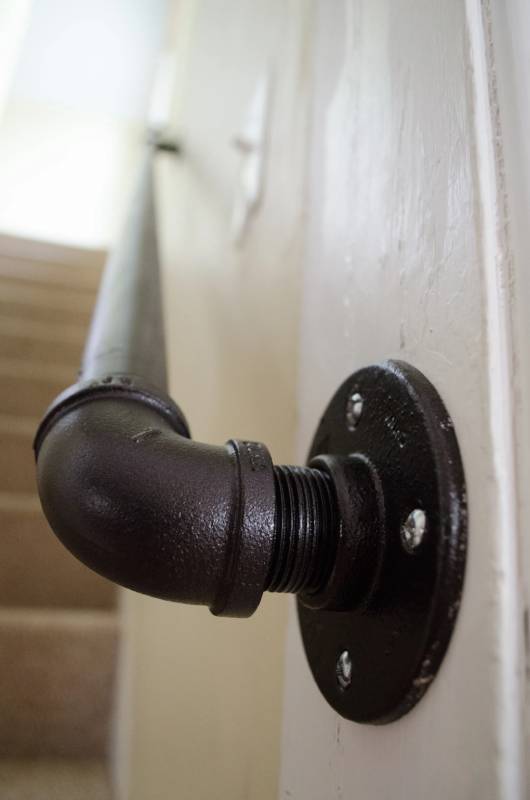
| Materials: | Galvanized Floor Flanges, Galvanized Steel Pipes, Tee Fitting, Elbow Fitting, Nipple Fitting, Spray Paint |
| Tools: | Drill, Screwdriver |
| Difficulty: | Moderate |
Galvanized pipe is a great-looking choice for a handrail if you’re going for an industrial look. You can also get hold of galvanized steel pipes for free or cheap from building supply yards or potentially even in skips. Fitting the pipe to the wall is really all about getting the right fittings, and this handrail DIY guide shows you how to do that, as well as extolling the virtues of accurate and reliable measurements.
Conclusion
Handrails are an important part of any staircase. They are used to help ensure stability when going up and down stairs, and they also help finish the look of the staircase and the surrounding décor. There are a lot of options when it comes to design and material, and if you don’t want to pay a professional to come out and do the job, and are good at measuring and handy with tools, the 8 plans above can help you create and fit your own handrails.
Featured Image Credit: Christa Grover, Pexels
Contents

